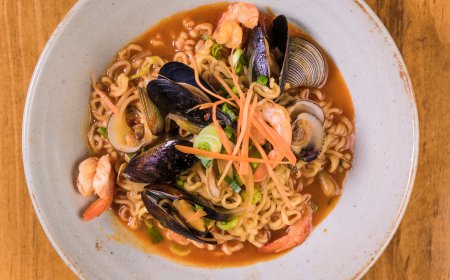Guidelines for Reducing Consumption of Harmful Sugars
By following simple guidelines such as raising awareness about the harms of sugar, gradually reducing consumption of sodas and sweets, avoiding processed foods, increasing intake of fresh fruits and vegetables, using healthy alternatives like honey, regularly exercising, and promoting commitment, it is possible to effectively reduce the consumption of harmful sugars and maintain overall health.

By following simple guidelines such as raising awareness about the harms of sugar, gradually reducing consumption of sodas and sweets, avoiding processed foods, increasing intake of fresh fruits and vegetables, using healthy alternatives like honey, regularly exercising, and promoting commitment, it is possible to effectively reduce the consumption of harmful sugars and maintain overall health.
Guidelines for Reducing Consumption of Harmful Sugars
Excessive consumption of harmful sugars can negatively impact overall health, increasing the risk of various chronic diseases such as obesity, diabetes, and heart diseases. In this context, reducing the intake of harmful sugars is considered a crucial step towards improving general health.
1. Awareness of sugar sources: Individuals should be aware of the different sources of sugar in their diet, whether it's added sugar in beverages and sweets or natural sugar found in fruits. With a good understanding of these sources, one can make informed decisions on how to reduce their intake.
2. Reduce consumption of sugary drinks and sweetened juices: Carbonated beverages and sweetened juices are considered one of the biggest sources of harmful sugars in daily diet. Instead, try to rely on water as the main beverage and substitute sweetened juices with fresh fruits.
3. Avoid processed foods and drinks: Reduce consumption of canned and processed foods and drinks, as they usually contain large amounts of added sugars and harmful preservatives.
4. Rely on natural sugar sources: Replace refined sugar found in sweets and drinks with fresh fruits, dates, and honey as sources of natural sugar. These fruits contain essential fibers, vitamins, and minerals along with sugar.
5. Read food labels carefully: When purchasing food products, check the food labels to know the amounts of added sugar in each serving, and try to choose options with lower sugar content.
6. Control portion sizes: When consuming sweets or foods containing harmful sugars, try to control portion sizes to reduce the amount of sugar consumed.
7. Use healthy alternatives: If craving sweets, opt for healthy alternatives such as dates or dried fruits instead of canned and processed sweets that contain added sugars.
By following these guidelines and implementing them in daily life, individuals can reduce the consumption of harmful sugars and improve their overall health.
Reducing harmful sugars
Reducing harmful sugars is important for promoting overall health and preventing many chronic diseases. By adopting a healthy diet and reducing the intake of harmful sugars, individuals can achieve this. The primary goal of reducing harmful sugars is to minimize the consumption of added sugars and avoid products that contain hidden sugars in processed foods. Here are some important steps to achieve this goal:
1. Awareness of harmful sugar sources: Individuals should be aware of the different types of sugar and their sources in the diet. This includes added sugar in sodas and sweetened juices, as well as sugar found in pastries and manufactured sweets.
2. Analyzing food labels: Before purchasing food products, individuals should carefully read food labels to determine the content of added sugar. Pay attention to different names for sugar such as glucose, fructose, and high fructose corn syrup.
3. Reduce consumption of sweetened beverages: Carbonated beverages and sweetened juices contain large amounts of harmful sugars. It is advisable to completely avoid them or minimize consumption to the lowest possible level.
4. Substitute sweets with healthy alternatives: High-sugar sweets can be replaced with healthy alternatives such as fresh fruits or dates. Fresh fruits contain natural sugars along with vitamins and minerals essential for the body.
5. Control portion sizes: When consuming sweets or foods containing harmful sugars, it is recommended to control portion sizes and reduce them to keep sugar consumption in check.
6. Use naturally flavorful foods: Natural flavor-rich foods such as cinnamon and vanilla can be used to enhance taste without the need for additional sugar.
7. Plan daily meals: By planning daily meals, individuals can avoid the urge to consume high-sugar sweets or fast food and instead rely on nutritious and balanced meals.
By adopting these guidelines, individuals can effectively reduce their consumption of harmful sugars and improve their overall health.
Practical guidelines for a healthier life
Practical guidelines for a healthier life with reducing harmful sugars include a set of daily steps that can be taken to reduce the intake of harmful sugars and improve overall health. Here is a detailed breakdown of these guidelines
1. Set realistic goals: Individuals should set realistic goals for the health changes they want to achieve. These goals may include reducing the consumption of harmful sugars by a certain percentage over a specified period, such as reducing sugar intake to half of the current amount within one month.
2. Plan healthy meals: By pre-planning meals, individuals can avoid temptations and rely on healthy, balanced foods. Daily meals should include a variety of protein, vegetables, and fruits, while reducing foods and beverages containing added sugars.
3. Control portion sizes: It is advisable to carefully control portion sizes, especially when consuming sweets or foods containing harmful sugars. Measuring tools such as spoons and cups can be used to help control the amount of sugar consumed.
4. Substitute with healthy alternatives: Products containing added sugar can be replaced with healthy alternatives, such as using natural honey or artificial sweeteners. Spices like cinnamon and vanilla can also be used to add sweetness without the need for sugar.
5. Prepare for temptations: Harmful sweets and sugar-rich meals should be avoided at home as much as possible. Instead, healthy meals and snacks can be prepared in advance to help avoid temptations when the desire for sweets arises.
6. Balance in lifestyle: In addition to diet, focus should also be placed on regular physical activity and good sleep to achieve better overall health and help control any increase in harmful sugar intake.
7. Commit to gradual progress: Committing to reducing the intake of harmful sugars can be challenging, so gradual progress should be embraced. Instead of transitioning suddenly to a completely sugar-free diet, start by setting priorities and focusing on small, achievable changes.
By following these practical guidelines, individuals can effectively reduce their intake of harmful sugars and enjoy a healthier life.
Sugar challenge
The sugar challenge entails taking effective steps to reduce the intake of harmful sugars in the diet with the aim of improving overall health and preventing chronic diseases.
1. Assess current dietary habits: The challenge should begin with evaluating an individual's current dietary habits, including sources and quantities of sugar. It's advisable to record all foods and beverages consumed and determine the level of consumption of harmful sugars.
2. Set health goals: Individuals should set realistic health goals to improve overall health and reduce the intake of harmful sugars. These goals may include reducing sugar consumption by a certain percentage over a specified period.
3. Prepare a healthy meal plan: Individuals should prepare a healthy meal plan that includes a variety of natural and nutritious foods instead of processed foods and sugar-rich beverages. This plan should include fruits, vegetables, healthy proteins, and whole grains.
4. Identify healthy sugar alternatives: Individuals can replace refined sugar with healthy alternatives such as natural honey or use spices like cinnamon and vanilla to add sweet flavor to foods without the need for sugar.
5. Plan meals and snacks: By pre-planning meals and snacks, individuals can avoid temptations and make healthier choices instead of harmful sweets.
6. Control portions and maintain dietary balance: Individuals should monitor portion sizes and ensure overall dietary balance to achieve the goals of reducing harmful sugars.
7. Regular monitoring and evaluation: It's important to regularly monitor an individual's progress during the sugar challenge, evaluate results, and adjust dietary plans as needed.
By following these guidelines, individuals can successfully undertake the sugar challenge and effectively reduce their intake of harmful sugars, contributing to improved overall health and prevention of chronic diseases associated with increased sugar consumption.
Harmful sugars and body health
Harmful sugars are considered one of the main contributors to many health problems that affect overall body health. They contribute to weight gain, elevated blood sugar levels, increased risk of heart diseases, strokes, type 2 diabetes, and other illnesses. Thus, reducing harmful sugars is considered an important step towards improving body health and preventing the development of diseases.
1. The effect of harmful sugars on the body: Harmful sugars cause a rapid increase in blood sugar levels, leading to increased insulin secretion, a hormone that aids in fat storage and weight gain. Harmful sugars can also cause inflammation and damage to blood vessels, increasing the risk of cardiovascular diseases.
2. The effect of harmful sugars on weight and obesity: Harmful sugars increase appetite and promote overeating, ultimately leading to weight gain and the development of obesity. Excess weight increases the risk of many chronic diseases, including heart diseases, strokes, and diabetes.
3. The effect of harmful sugars on type 2 diabetes: Consumption of harmful sugars is associated with an increased risk of developing type 2 diabetes. Excessive sugar consumption leads to elevated blood sugar levels, making the body insulin resistant, which regulates blood sugar levels.
4. Other diseases associated with harmful sugars: In addition to obesity and type 2 diabetes, harmful sugars can also increase the risk of other diseases such as non-alcoholic fatty liver disease, kidney diseases, and cancer.
5. Controlling harmful sugars to improve health: To mitigate the impact of harmful sugars on the body, it is essential to limit the consumption of added sugars in the diet. This can be achieved by avoiding sugary beverages, processed desserts, and processed foods containing added sugars.
Considering these detrimental effects of sugars and their impact on body health, reducing the intake of harmful sugars is encouraged to contribute to overall health improvement and prevention of chronic diseases.
Improving the diet and preventing diseases
Improving dietary habits and preventing diseases is an important goal for many individuals, and it can be achieved by reducing the consumption of harmful sugars. Harmful sugars contribute to weight gain and elevated blood sugar levels, increasing the risk of heart disease, strokes, type 2 diabetes, and various other chronic diseases. Here's how to improve your diet and prevent diseases by focusing on reducing harmful sugars:
1. Increase consumption of vegetables and fruits: Vegetables and fruits are rich in vitamins, minerals, and fiber, which are essential for overall health. They should constitute a fundamental part of the daily diet, with a preference for fresh fruits over sweetened juices.
2. Increase consumption of whole foods: It's preferable to replace refined and processed products with whole grains like whole wheat bread and brown rice.
3. Maintain a balance of healthy proteins and fats: Include good sources of protein such as lean meats, fish, and legumes in your diet. Reduce intake of saturated and trans fats and increase consumption of healthy fats like monounsaturated fats and omega-3 fatty acids.
4. Avoid sweetened and processed beverages: Steer clear of sugary sodas and fruit juices with added sugars, which contain large amounts of harmful sugars.
5. Monitor intake of added sugars: Keep an eye on added sugars in processed products such as canned goods, sauces, and pastries, and avoid products containing excessive amounts of sugar.
Harmful sugars
Harmful sugars refer to specific types of sugars that are believed to negatively impact health when consumed in large quantities. These harmful sugars include added sugars (such as white sugar and high-fructose corn syrup), which naturally occur in some foods like fruits but are also added to many processed products to enhance flavor.
Current health guidelines indicate that consuming harmful sugars in large amounts can lead to various health problems, including weight gain, increased risk of heart disease, strokes, and type 2 diabetes. Therefore, many individuals focus on reducing their intake of harmful sugars as part of a healthy lifestyle.
1. Identify sources of harmful sugars: Individuals should identify the main sources of harmful sugars in their diet, including sweetened sodas, processed desserts, sugary pastries, and packaged foods.
2. Read food labels carefully: It is important to read food labels to determine the sugar content in products. Pay attention to different names for sugar such as sucrose, fructose, and high-fructose corn syrup.
3. Replace with healthier alternatives: Instead of consuming sugar-sweetened products, they can be replaced with healthier alternatives such as natural honey or artificial sweeteners.
4. Reduce consumption of sweetened beverages: It is essential to reduce the intake of sweetened sodas and fruit juices, opting instead for water and unsweetened tea.
Summary
Guidelines for reducing the intake of harmful sugars are an essential part of a healthy and balanced lifestyle. Individuals are encouraged to take simple steps to reduce their consumption of harmful sugars and improve their overall health. These guidelines include relying on natural, fiber-rich foods such as fruits and vegetables, avoiding sugary beverages, and reading food labels to determine the sugar content in products. It is also recommended to substitute healthy alternatives for sugar, such as natural honey or calorie-free artificial sweeteners, and to reduce the consumption of sweets and baked goods. By following these guidelines, individuals can maintain blood sugar levels, prevent many chronic diseases associated with excessive sugar intake, and achieve better long-term health.
Sources
1. World Health Organization (WHO)
- Official Website: [WHO - Sugar intake for adults and children]
2. Centers for Disease Control and Prevention (CDC)
3. American Heart Association
- Official Website: [American Heart Association - Added Sugars]
What's Your Reaction?

















































































































